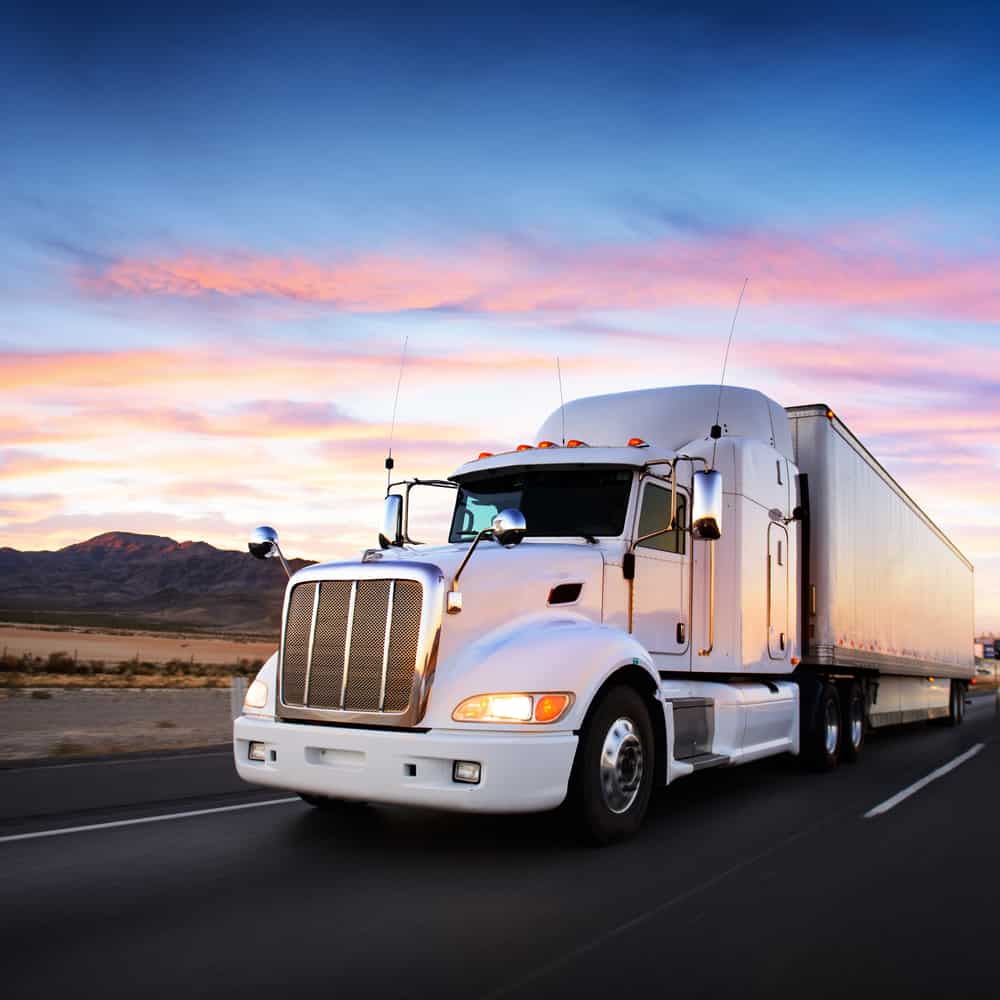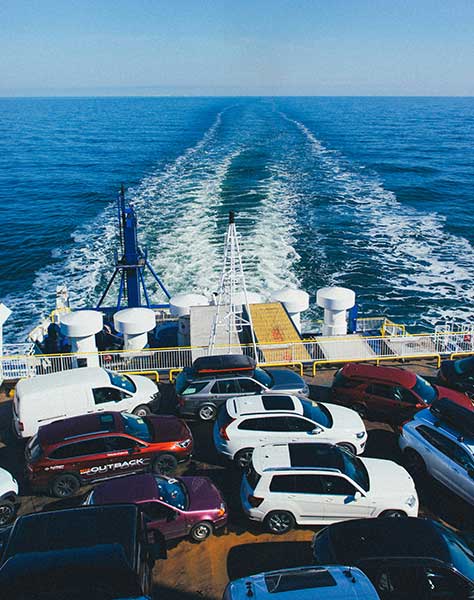Alaska car shipping
Ship a car to Alaska
Let’s talk about some things you should know before your vehicle transport to Alaska.

Whether you’re a snowbird or just looking to get a change of pace and want to bring your wheels with you to the Land of the Midnight Sun, shipping your car safely and effectively can seem like a pretty big undertaking.
If you’re thinking about shipping your car to Alaska, here are the most important things you’ll need to know.
Things to know about
shipping your car
Documentation
The documents you’ll need for dropping off/picking up from a port are vehicle registration or title and photo ID.
Market value
You will need to know the current market value of your vehicle for insurance purposes.
List of modifications
Advise your relocation specialist of any after-factory modifications made to your vehicle. For example, a lift kit, oversized tires, camper shell, tonneau cover, bug shield, bike/ski/luggage rack, spoiler and ground clearance of less than 4 inches.
Vehicle inspection
An inspection is required before and after transport… no exceptions! You or your designated representative will be asked to complete a walk-around exterior inspection of your vehicle. Our driver is also required to obtain a signature on the inspection form.
Pickup schedule
In Anchorage, vehicle pick-ups only occur on Monday, Wednesday, Thursday and Friday between 8 am and 3 pm.
Port arrival and offload
When your vehicle arrives at the port, it can take several days to offload depending on where it is on the vessel. Once it is available, our driver will transport it to your destination.
Delivery schedule
We deliver 7 days a week during daylight hours only to enable proper inspection of the vehicle.
Active contact information
You must provide Reindeer with an active phone number for you or your contact at origin and destination
Shipping time to Alaska
Shipping time is dependent on many variables (many out of our control). The best way to plan for the amount of time it will take is to speak with your relocation coordinator.

Things to know about
vehicle shipping preparation
Fuel tank
Your vehicle’s fuel tank must be at ¼ tank or less.
Get your car climatized
Please ensure your vehicle has the appropriate level of coolant, transmission fluid and/or antifreeze. Neither Reindeer nor the carrier shall be responsible for damage caused by Acts of God or nature that may change the climate conditions.
Personal belongings
Please remove all personal belongings from the interior and trunk areas of the vehicle prior to transport. This includes any snow tires.
Electric vehicle shipping
For electric vehicles, please leave the charger in the car and ensure it is 80% charged at pick-up.
Wash your car
When the carrier arrives for pick-up, a complete exterior inspection will be completed prior to loading your vehicle. For purposes of a thorough inspection, it is helpful if your vehicle is clean and clear of ice, snow or other debris.
Set of keys
One set of keys for the vehicle must be provided at the time of pick-up.
Overall condition
Your vehicle must be in full working condition, which means it starts, rolls, brakes and steers; and that the driver-side door and window work properly. It also cannot be leaking fluid.
Remove transponders
Remove any toll or EZ pass transponders. Even if it's in the glove box it could activate and charge you.
Disable alarms
Alarm systems should be disabled before our driver’s arrival on the day of loading.
No-go items
Ammunition or firearms, drugs (both prescription and illegal), any type of hazardous materials such as chemicals, flammable gases or liquids, and/or hazardous waste. No live animals of any kind, no perishables or high-value property, such as money or bonds. If such items are found in the vehicle at any time during transport, they will be removed. It is always the onus of the shipper to make sure the proper arrangements are made for shipping any of the above.
Shipping cost to Alaska
Cost is dependent on several factors, which typically include:
- Mileage
- Vehicle size
- Delivery location


Open vs. enclosed
vehicle carriers
Open vehicle carriers
Open vehicle carriers are open, long-haul carriers, without sides or a roof, so vehicles are exposed throughout the trip. This is the most common type of car carrier and involves a truck typically between 75 and 80 feet in length with the ability to haul a two-level trailer. Usually, this method is less expensive and more environmentally friendly than enclosed carriers. However, it offers less protection against the elements and is less secure than a fully enclosed trailer.
Enclosed vehicle carriers
If you’re planning to relocate a new, luxury, or collector vehicle you may want to consider this option. A fully enclosed trailer offers better protection from external hazards such as bad weather and poor road conditions providing 360-protection with a roof and four sides. This option is less fuel efficient and more costly than an open carrier. Because it’s fully enclosed, the driver often is unable to do routine visual checks.
If it's got wheels, we move it!
Why choose us
Over 500,000 vehicles moved in the United States, Canada & worldwide.
01
real.
When you work with Reindeer Logistics you will never encounter a maze of computer recordings or an automated telephone system. No matter when you call, you will talk with a real, live person who is trained to guide you through the auto relocation process.
02
personal.
All our customers are assigned a relocation coordinator whose main objective is to anticipate and accommodate your every need. Your coordinator will be dedicated to you from pick up to delivery, ensuring that your car is where you want it, when you want it.
03
service.
Reindeer’s commitment to constant product and service improvement is the ultimate demonstration of our promise of delivery, quality, predictability and status.
Customer testimonials
What our customers say
Privacy Overview
| Cookie | Duration | Description |
|---|---|---|
| cookielawinfo-checbox-analytics | 11 months | This cookie is set by GDPR Cookie Consent plugin. The cookie is used to store the user consent for the cookies in the category "Analytics". |
| cookielawinfo-checbox-functional | 11 months | The cookie is set by GDPR cookie consent to record the user consent for the cookies in the category "Functional". |
| cookielawinfo-checbox-others | 11 months | This cookie is set by GDPR Cookie Consent plugin. The cookie is used to store the user consent for the cookies in the category "Other. |
| cookielawinfo-checkbox-necessary | 11 months | This cookie is set by GDPR Cookie Consent plugin. The cookies is used to store the user consent for the cookies in the category "Necessary". |
| cookielawinfo-checkbox-performance | 11 months | This cookie is set by GDPR Cookie Consent plugin. The cookie is used to store the user consent for the cookies in the category "Performance". |
| viewed_cookie_policy | 11 months | The cookie is set by the GDPR Cookie Consent plugin and is used to store whether or not user has consented to the use of cookies. It does not store any personal data. |